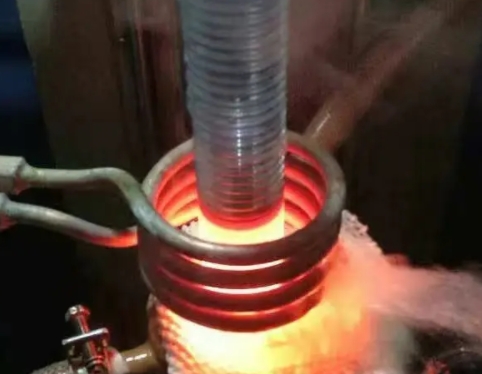- 28
- Mar
Prosessprinsipp for høyfrekvent slukkeutstyr
Prosessprinsippet for høyfrekvent slukkeutstyr
Høyfrekvent bråkjølingsutstyr brukes mest til overflateslukking av industrielle metalldeler. Det er en metallvarmebehandlingsmetode som genererer en viss indusert strøm på overflaten av arbeidsstykket, raskt varmer opp overflaten av delen og deretter raskt slukker den. Induksjonsvarmeutstyr, det vil si utstyr for induksjonsoppvarming av arbeidsstykker for overflatekjøling.
Quenching agent is a process oil used as a quenching medium. Cooling performance is an important performance of the quenching medium. Its quality directly affects the quality of the quenched parts. Good cooling performance can ensure that the quenched parts have a certain hardness and qualified metallographic structure, and can prevent deformation and cracking of the parts. In addition to these, the quenching agent should be non-toxic, odorless, easy to handle, non-polluting to the environment, and make the surface of the quenched workpiece bright. The basic principle of high-frequency quenching The workpiece is placed in an inductor wound with a hollow copper tube, and after passing in an intermediate frequency or high-frequency alternating current, an induced current of the same frequency is formed on the surface of the workpiece, and the surface or part of the part is rapidly heated (a few seconds). The temperature can be raised to 800~1000℃ within a few minutes, and the heart is still close to room temperature. After a few seconds, spray (immersion) water cooling (or spray immersion oil cooling) to complete the immersion work, so that the surface or part of the workpiece can meet the corresponding hardness requirements .

